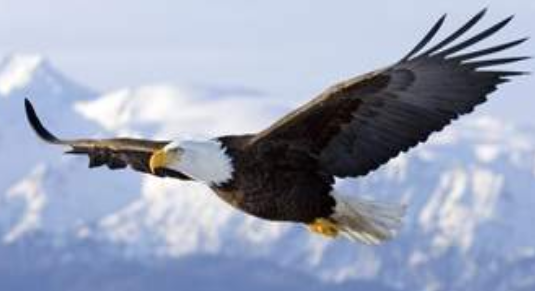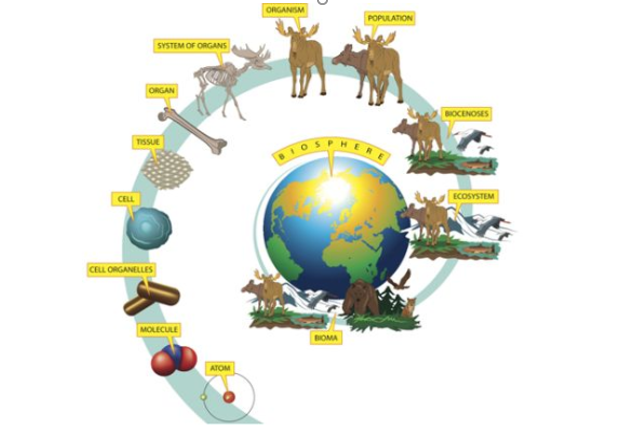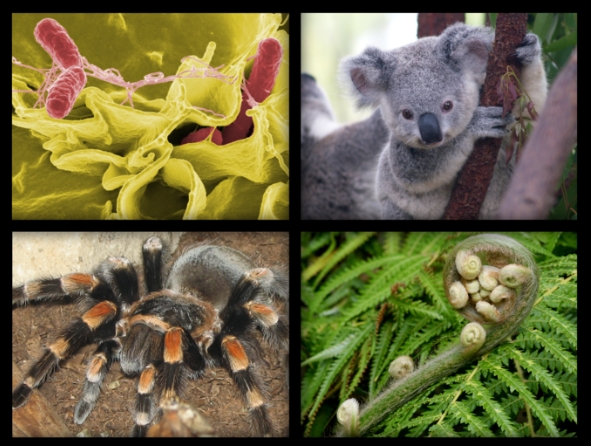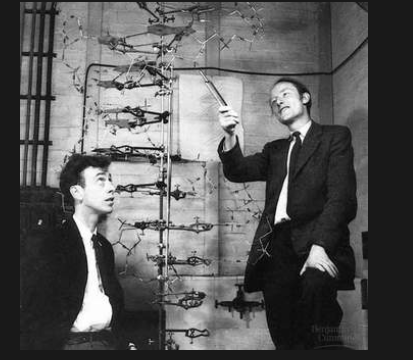Unit - 1
Introduction
Then just the conceptual philosophy the human eye and the camera and the human eye have many things in common -- the eye captures images in a similar way the camera captures an image. Most surprisingly the anatomy of the camera has more similarities to a biological eyeball of a living being than anyone would possibly imagine, including the lens which is compared to cornea and the film-to the retina. These similarities the are viewed in camera gives the appearance of a robotic eye. However, the camera and the eye are no way identical to each other though there are many similarities between them.
Cornea and Lens
The cornea is the similar to the “cap” of the eye. This transparent (like clear jelly) structure has a spherical curvature and sits to the front of the eye. However, the lens of a camera is also transparent (glass) and also sits at the front of the body. Like the cornea, the lens also maintains a spherical curvature. The curvature present helps to focus on images towards the right and left partially though not fully. The corneal and lens curvature allows the eye and camera to view, though not in focus, a limited area to both the right and the left. That is, without the curve, the view of the eye and camera would be only focus on the direct image in front of it.
Iris and Aperture
The aperture is to the camera as the iris is to the eye, and this reveals one of many similarities between cameras and the eyes. The aperture size refers to how much light is let into the camera and will ultimately hit the sensor or film. As with the case of human eye, when the iris contracts itself, subsequently the pupil becomes smaller and therefore the eye takes in less light. On the other hand, when the iris becomes wide in dark situations, the pupil turns larger, as it can capture more light. The same effect is seen in the case with the aperture; larger (lower) aperture values allow lighter than a small (higher) aperture value. The lens opening is the pupil; the smaller the opening, the less light is allowed inside.
Focus in Eyes and Cameras
Both the eye and camera have the tendency to focus on one single object and blur the rest of the object, whether in the foreground (shallow depth of field) or away at a distance. Likewise, the eye can focus on a larger image, just as a camera (greater depth of field)
Scope and Field of View
The camera has a limited scope to capture images around as seen similar to the eye, the curvature of the eye and the lens of the camera allow both to take in what is not directly in front of it. However, the eye can capture in a fixed scope, while a camera's scope can be changed using the focal length of different types of lenses.
Retina and Film
The retina is present at the back of the eye its main function is to collect the light reflected from the surrounding environment to form the image. In case of the camera a similar task is performed either by film or sensors in digital cameras. This process underpins both how cameras work and how eyes work.

Fig.1 the picture shows the parts of the camera and the human eye with different names but have similar functions.
Eye is an organ of sight present in the human body, while a camera is equipment made by humans is used to record images. The most striking difference between an eye and a camera is that an eye cannot record an image. The eyes possess living cells, these living cells are used to detect light and interpret the light and convert this light into electrical signals that are sent to the brain and processed in the brain to from the image. The camera possess has a diaphragm which record the image on to a film or sensor or on tape digitally as in modern cameras. A camera capture in 2 dimensions while the eye captures in 3 dimensions. This means that when we see with our eyes, we see the height, width and depth of the image. With a camera we only see height and width of the image. The Eye has a Stereoscopic vision, and such images can be seen with both eyes open than with a single eye There is no way to have the depth in the picture as a photograph is a flat medium. However, this aspect is almost impossible with a camera.
The Retina and Pupil help change accordingly while changing the focus. In case of the camera the lens is used to change the focus. Eye has a blind spot which is also known as scotoma; however, the cameras do not have any such limitations. The camera is not equipped to capture images in the dark but the eye gets adapted to the dark if necessary and can capture images. The eye can also adapt itself to the dark and within a few seconds one can get start seeing better in the dark. However, if a camera is not equipped to capture images in the dark it can never get accustomed.
The eye is highly sensitive to the dust and foreign particles that settle on the outer film. In a camera there is no such issues as any dust can simply be wiped off the lens.
Comparison of Bird flying and Aircraft
People have looked up at birds for years and birds have inspired us to fly. Airplanes have wings, that look similar to birds, Airplanes also have a light skeleton (or framework) that helps to decrease their weight, and they also have a streamlined shape to decrease drag. The big difference is that airplanes do not flap their wings like birds do. Airplane wings are designed to by changing the pressure, rather than by flapping them up and down.
Birds and Aircraft use the same principle to fly. Both aircraft wings and bird wings have a basic air foil shape with both top and bottom sides cambered but with the upper chamber is more pronounced than the bottom. Air moving above the wings moves faster than the air below creating a pressure difference that lifts the wing but to do this, air has to move over the wing. Aircraft do this using engines, the jet engines or propellers, create thrust that overcome the plane's inertia, aerodynamic drag and accelerate it till enough air is moving over the wings surfaces to create lift the, birds on the other hand use their powerful flight muscles attached to an enlarged sternum to flap their wings. The flapping motion is in a swimming fashion where the wings fold and sweep forward during the upstroke and spread out and flap down with a slight backwards sweep to create thrust and lift. Some birds make a running take off to get some speed while others jump from heights to utilise gravity to get the required starting momentum. When the birds are gliding the aerodynamics are exactly similar. All wings work by bending the air downwards and exert a force equivalent to the force that the weight of the bird or aircraft exerts on the air.
When birds flap their wings they provide a rearward propulsive force, similar to when human beings swimming using butterfly stroke and this is combined with the downward bending of the air around the wing, Airplanes are fixed wing structures that rely on an independent source of thrust (engines, or wind in the case of gliders).
Birds generate thrust by flapping their wings up and down. This would be a very complicated and inefficient method for airplanes to use, perhaps even impossible. Both airplanes and birds control the pitch (climbing or descending movement) by a similar method. The tail of the bird is same as the horizontal stabilizer of an airplane. By forcing or Appling pressure on the rear end up or down the wings will either point more up or more down making the bird or aircraft climb up or descend down.
But airplanes have a tail that is vertical for controlling the yaw (left-right orientation) of the airplane. Birds in contrast perform this function by twisting their horizontal tail in one direction or the other (clockwise or counter clockwise about the central axis of the bird). This pushes their rear end to the right or left keeping them pointed in the right direction.n Large birds soaring in a high wind have shown this behaviour. So, birds unlike airplanes control their pitch and yaw with a single control surface (the tail). It is really quite amazing and humbling to see how skilfully they manoeuvre with a tail.


Fig 2: shows the comparison of a flying bird and an Aircraft. Both airplanes and birds control the pitch (climbing or descending orientation) by a similar method. Aeroplanes do not flap their wings; the tail of the bird is very much like the horizontal stabilizer of an airplane.
Biology is the study of life and living things through rigorously-tested and peer-reviewed scientific research. Biology has evolved as a field of science since it was studied in ancient civilization, although modern biology is a relatively recent field. Modern biology is a very vast and eclectic field that has many specialized disciplines that study the growth, structure, function, evolution, distribution or other features of living beings.
Biology is the scientific study of life, and similar to life, biology is a rich and diverse field of study. Just like the living organisms it focuses on, the versatility and ever-changing making it a study subject that is full of excitement, beauty and wonder. Life at various levels is studied by Biologists, their study usually includes from the tiniest of cells, and organisms to entire ecosystems.
Biology is the science of life. The name is derived from the Greek words "bios" (life) and "logos" (study). Biologists study the structure, function, growth, origin, evolution and distribution of living organisms. Biology is a vast field that is generally considered to have at least nine "umbrella" fields of biology, each of which consists of multiple subfields.
- Biochemistry: it deals with the study of the material substances that make up living things
- Botany: is the study of plants, including agriculture
- Cellular biology: it deals with the study of the basic cellular units of living things
- Ecology: It consists of the study of how organisms interact with their environment
- Evolutionary biology: it is the study of the origins and changes in the diversity of life with time
- Genetics: it deals with the study of heredity
- Molecular biology: is the study of biological molecules present in living beings
- Physiology: it deals with the study of the functions of organisms and their parts
- Zoology: the study of animals, including behaviour of Animals
- Adding to the complexity of this enormous fields, is the fact that they overlap. It is however impossible to study zoology without knowing a great deal about evolution, physiology and ecology.
All the branches that are included in biology can be summarised within a framework of five basic understandings about living things. The basic five details provide an understanding in biological research and taking a look at these factors gives an endless fascination.
- The Cell Theory: There are three parts to cell theory — the cell is known as the basic unit of life, all living things are composed of cells, and all cells arise from pre-existing cells.
- Energy: All living things need energy, and energy flows between organisms and also between organisms and the environment.
- Heredity: It deals with living things that have DNA and genetic information codes the structure and function of all cells.
- Equilibrium: It’s a condition of all living things that must maintain homeostasis, a state of balanced equilibrium between the organism and its environment.
- Evolution: Is the overall unifying concept of biology. Evolution is the change over time that is the engine of biological diversity.

Fig 3: The science of biology, that shows the hierarchy of biological organization.
According to Biological research the first forms of life present on the earth that evolved billions of years ago and later came the evolution of larger organisms. The new ones which we are familiar with are the mammals, birds, and flower, that originated within the last 200 million years. Modern-appearing humans, Homo sapiens, are precisely the new species, having inhabited this planet for only the last 200,000 years (approximately).
Although modern biology is considered a most recent development, sciences related to it included studies since ancient times. Natural philosophy was studied very early as the ancient civilizations of Egypt, Mesopotamia, China, and the Indian subcontinent. However, the modern origin of modern biology and its approach to the study of nature are most often traced back to ancient Greece history. (Biology is derived from the Greek word “bio” meaning “life” and the suffix “ology” meaning “study of.”)
Advances in microscopy also had an impressive impact on biological thinking. In the early 19th century, a number of biologists had pointed out the importance of the cell and in 1838, Schleiden and Schwann began to impart the now universal ideas of the cell theory. The coherent theory of evolution was first introduced by Jean-Baptiste Lamarck, although the theory of natural selection around the scientific community. The discovery of the double helix of DNA in 1953, marked the transition to the era of molecular genetics.


Fig 4: A small study of the organisms and its origin. A collection of organisms from top left: bateria, Koala, fern, toadstool, treefrog and tarantula
At this point in history, biological study mainly consisted of classifying organisms and understanding the human body on the macroscopic level. The discovery of the microscope opened up a whole new world of living things! The earliest microscopes were developed in the Netherlands in the late 16th century, but were extensively put to use throughout the 17th century when Robert Hooke identified the first cells by examining cork tissue. Dutch scientist Anton van Leeuwenhoek identified single-celled eukaryotic organisms and many species of bacteria. Based on these early observations of microorganisms, the scientific community believed that spontaneous generation was responsible for their existence.

Fig 5: The Microscope that was developed by Robert Hooke.
During the eighteenth century, Carolus Linnaeus proposed a system for naming and classifying plants and animals which is still extensively used today. In 1973 a book was written by Carlos Linnaeus, Species plantarum, in his book Linnaeus described around 6,000 plants, each plant was assigned a binomial name—genus and species.
On the Origin of Species, was published by Charles Darwin in 1859, in which he outlined the theory of evolution by means of natural selection. His publications were very an important discovery; it disproved the idea that organisms generated spontaneously. Later, French chemist Louis Pasteur confirmed Darwin's findings by the discovery of certain bacteria that caused diseases. French scientist Louis Pasteur performed experiments on the use of microorganisms in fermentation and early vaccination procedures, and invented the process of pasteurization, in which heat is used to kill microorganisms found in food products. In his studies, Pasteur disproved the notion of spontaneous generation, showing that microorganisms can only arise from other microorganisms.

Fig 6: Louis Pasteur was the first to introduce pasteurization in milk, developed vaccines and introduced fermentation.
The first vaccines were developed by Pasteur later Robert Koch introduced the Germ theory of Disease at the end of the nineteenth century and by the early twentieth century, chemotherapy was developed. The use of Antibiotics began with penicillin by Alexander Fleming in 1928 and steroids were discovered in 1935. Gregor Mendel on inheritance, for which he was considered the father of genetics. The advancement of technology furthered biological research significantly into the 20th century, particularly with respect to understanding microbiology and genetics. In 1952, Rosalind Franklin discovered the molecular structure of the DNA double helix, though her male contemporaries Watson and Crick were credited with her discovery.

Fig 7: Watson and Crick model of DNA.
Brownian motion is the random, movement of particles that cannot be controlled in a fluid as they constantly collide with other molecules (Mitchell and Kagura, 2006). Brownian motion is thus a part responsible of the ability of movement in bacteria that do not encode or express motility movements, such as Streptococcus and Klebsiella species. Brownian motion can also affect “deliberate” movement exhibited by naturally motile bacteria that harbour pili or flagella. For example, an Escherichia coli cell that is swimming toward an area of higher oxygen concentration may fall “off-track” if it physically encounters a particle moving by Brownian motion or if such a particle(s) obstructs the bacterial cell’s path of motion. This form of “interference” adds to the stochasticity with which bacterial direction can change.
Lucretius a roman poet in the year 60 B.C described the motion of dust particles later in 1827 a Scottish botanist named Robert brown observed pollen grains randomly moving in water but he was unable to explain it clearly however the Brownian motion takes its name from Robert Brown,
Examples include:
- In still waters the motion of pollen grains
- The Movement of dust motes in a room (although largely affected by air currents)
- Diffusion of pollutants in the air
- Diffusion of calcium through bones
- Movement of "holes" of electrical charge in semiconductors

Fig 8: Brown evidence of the Brownian motion, He had noticed that the pollen grains moved with jerks and were invisibly stuck by some object, his observation was the random movements of atoms and molecules.
A brief account of microscopical observations made in the August, 1827, by Robert brown on the particles contained in the pollen of plants; and on the general existence of active molecules in organic and inorganic bodies when Brown " suspended in water some of the pollen grains of the species Clarkia polycell and examined them closely, he found them “filled with particles” of around 5 µm diameter that were “very evidently in motion”. He was soon satisfied that the movement that was observed in pollen grains “arose not from currents in the fluid or from its gradual evaporation, but belonged to the particle itself”. Brown’s work was the first comprehensive observation of a phenomena called Brownian Motion which remained unexplained until the beginning of the 20th century by Bachelier and most notably by Einstein in his famous paper in 1905. Brownian motion is the most basic description of the dynamics of a particle, price, etc. under the influence of external noise.
Julius Robert von Mayer was a German physician and physicist. The Law of conservation of Energy was first stated by him which states that: energy is neither created nor destroyed. According to Mayer the plants and animals only source of energy was the sun and when absorbed plants convert this light energy to chemical energy through the process of photosynthesis. "The plants take in one form of power, light; and produce another power: chemical difference." He used the term ‘power’ for energy and ‘chemical difference’ for chemical energy. He therefore made it clear that plants do not only produce organic matter but also provide the energy which sustains life.
Thus, the Brownian motion is one of the characteristic examples used to illustrate the present approaches to stochastic thermodynamics, considerable effort has been made to identify thermodynamic quantities like heat, work, entropy at the level of a single Brownian particle, on the other hand Julius Mayer is best known for his original statements on the conservation of energy which is now known as the First law of thermodynamics, namely that energy can neither be created nor destroyed. Therefore, the discoveries of Robert Brown and Julius Mayer formed the basis for thermodynamics.
Scientific inquiry indicates to the various ways in which scientists study the natural world and suggested explanations based on the evidence derived from their experimental work. The steps involved in a scientific inquiry are as follows:
- Observation
- Question
- Hypothesis
- Experiment
- Results
- Conclusion
The initial fundamental importance to define and describe Brownian motion was that it supports the modern atomic theory. In the recent days, the mathematical models that describe Brownian motion are used in physics, economics, engineering, math, chemistry, biology, and a host of other disciplines.
Mayer was also the first person to propose the vital chemical process which is now referred to as oxidation which is the primary source of energy for all living creature. This relation implies that heat and work are identical to each other and are present in various forms of energy which can be transformed. This law was known as the first law of the caloric theory and led to the formulation of the general principle of conservation of energy,
References:
- Principles of Biology- Lisa Bartee and Catherine Creech.
- The History of science in the 18th Century-Ray Spangenburg and Diane.k. Noser.
- Brownian motion Calculus—Ubbo.F. Wiersema.